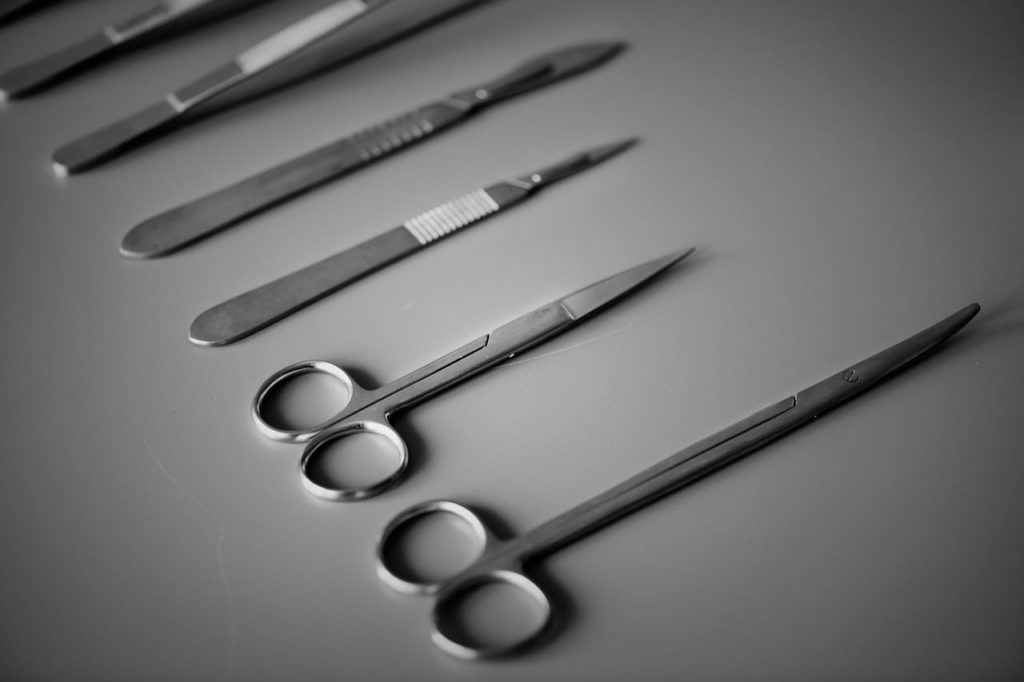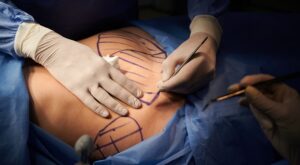Dr Goldman’s professional opinion on this very serious and dangerous situation
The recent case of a young woman who had a cardiac arrest in a Sydney clinic while undergoing a cosmetic procedure (breast augmentation) once again highlights the fact that safety is paramount. All else is secondary.
The operation was performed under local anaesthetic with intravenous sedation. According to the published article, a specialist anaesthetist was not present. The assumption is that the doctor performing the surgery also administered the sedation and local anaesthetic. Doctors regularly give local anaesthetic but can also give the intravenous sedation as well as performing the surgery. This should not be performed if a significant surgical procedure is being done. The correct medication at the correct dose is essential for a safe level of sedation and anaesthetic to enable an operation of this nature can be performed. It also requires appropriate monitoring of the patient’s breathing, heart and circulation. This is impossible to do safely if the doctor is also performing the surgery with the required level of concentration.
Local anaesthetics are schedule 4 drugs with significant potential risks and side effects. In addition, they often also contain a drug called adrenaline, which has a potent effect on the heart and circulation. Adrenaline is also a natural hormone. All these local anaesthetics have a maximum safe dose that cannot be exceeded. The effects of excessive doses of local anaesthetic administered to a person will often cause generalised seizures of the type that occurs in a patient with epilepsy. However, more dangerously, excessive doses of local anaesthetic can initially cause irregularities of heart beat but also a cardiac arrest.
Although it is possible that a particular person has an unknown sensitivity to a particular local anaesthetic drug or even adrenaline, or has an unknown medical condition that can contribute to such a sensitivity, it is far more likely that the maximum safe dose was exceeded in the case in question, without the appropriate monitoring. The reason for this opinion is that the first side augmentation had already been completed and the cardiac arrest occurred during the surgery on the other side. If appropriate monitoring was in place, alarms would have alerted the doctor (better still, the anaesthetist if present) to the fact that the heart rhythm had become irregular. Further, in these situations, there can often be a fall in the blood pressure which would have triggered alarms on the monitoring equipment if present.
None of this occurred according to the published report.
Credentials and accreditation requirements for clinics in Australia
There are a number of cosmetic operations that are often performed in “clinics” that are not subject to the same level of credentialing and accreditation that mainstream hospital are.
The Australian Council of Healthcare Standards (ACHS) is the national organisation that maintains standards in Australian hospitals. Hospitals with IVF and laboratory facilities have to comply with other credentialing organisations in addition.
The philosophy of ACHS is as follows:
“We’re an independent, not-for-profit organisation dedicated to improving quality in health care. Our Council represents governments, consumers and peak health bodies from throughout Australia.
We are Australia’s leading health care assessment and accreditation provider.
Our mission is to improve the quality and safety of health care.
We develop performance measures with industry and deliver quality improvement programs.”
– Last Review Date 27 May 2014
Hospitals are compulsorily part of this system. It is imperative to apply this same credentialing authority to ALL facilities that perform significant and invasive medical and especially surgical procedures in Australia in order to ensure the safety and quality of healthcare (and procedures) across all segments of the healthcare industry in Australia.
It is inconceivable and illogical to apply these standards to one segment of the healthcare system but allow a large, unregulated alternative set of facilities to provide invasive medical/surgical procedures completely without standards/levels of compliance/quality and safety of healthcare to be assessed and measured.
It is well known that there are a litany of procedures that occur in unregulated facilities in terms of the administration of various forms of anaesthesia from local anaesthetic to local and intravenous anaesthetic all the way through to general anaesthetics.
The performance of a variety of surgical procedures ranging from mainstream surgery (vasectomy, termination of pregnancy, excision of various benign and malignant skin lesions), various cosmetic surgical procedures (for example breast augmentation, liposuction plus others) and various dental procedures.
There are ample reports in the press and other media (coronial inquests) regarding very serious life threatening complications such as seizures, cardiac irregularities even cardiac arrest, catastrophic bleeding, severe and life threatening infections, and DEATH.
These extreme events have occurred in ALL the procedures mentioned above. The most recent event was reported as recently as Friday January 27th 2015 in the Sydney Morning Herald. There have been liposuction deaths in “unregulated” clinics in Australia in the recent past few years. Other complications were a death in a dental clinic related to unexpected and uncontrolled bleeding in a woman after a simple dental extraction. This woman had a particular bleeding disorder and was on blood thinning medication.
There have also been three reported liposuction-related deaths over a three year period in the recent past in Australia. Two of the three were from unrecognised bleeding after the surgery while the patient was in the recovery area. The third was from unrecognised perforation of the abdominal muscle wall following liposuction within the abdominal cavity, resulting in multiple intestinal perforations.
Preventable complications with greater regulation
These are dramatic and catastrophic complications that were ALL preventable if better, closer monitoring and more regulated healthcare facilities and services were in place across all levels of facility.
Unfortunately, this is not the case in the Australian healthcare system overall. Certain aspects of the Australian healthcare system are very well and adequately regulated (examples are the mainstream hospitals, all aged-care facilities, which also have federal healthcare regulations, general practitioners, all specialists, dentists and dental specialist nurses, allied healthcare professions). This is NOT an exhaustive list.
The crux of the problem at hand is the following:
Various levels of surgery are performed out of the mainstream regulated healthcare facilities. On occasion, these clinics and facilities will have other quality designations that DO NOT comply with the currently accepted healthcare regulatory requirements. These are used to allay the fears of the uninformed public.
Every surgical procedure and every form of anaesthetic carries risk, these risks can be life threatening and must never be underplayed. The common complications relating to anaesthesia all relate to overdose of these drugs with toxic effects on the brain (seizures), the heart (irregularities of heart rhythm and cardiac arrest in advanced and unmonitored/inadequately monitored cases), a fall in blood pressure/low blood pressure which contribute to the heart effect as well. In addition, the same drugs can inhibit the breathing mechanisms. There are extremely rare cases of allergic reactions to anaesthetic drugs that can be completely unpredictable. These are far less common than the administration of far too much local anaesthetic.
Further, a number of these clinics will also use intravenous sedation drugs in addition to the local anaesthetic. These drugs all also cause depression of the respiratory (breathing) mechanisms and can cause breathing to stop (respiratory arrest).
Some of these clinics and facilities will employ the services of a registered anaesthetic specialist. This will often negate the above mentioned anaesthetic complications. Unfortunately, the majority of such facilities do not employ specialist anaesthetic services for a number of reasons including attempts to reduce the cost of these procedures.
Lastly, the surgical procedures like breast augmentation, liposuction (in almost all forms), vasectomy, skin lesion removal to name a few are often performed by medical practitioners (doctors) with qualifications, training and experience that is inadequately regulated and poorly controlled. A significant number of these doctors are not registered specialists. Some are GP’s with a “cosmetic training”. Some are registered as GP’s in Australia but may be specialists from their country of origin but not registered specialists in Australia. Some of these “non-specialist” doctors are working under the training and supervision of Australian trained, registered and practicing specialists who only loosely supervise these doctors under their control.
The basic medical degree and qualification is called a Batchelor of Medicine and a Batchelor of Surgery (MB.BS) depending on the country of origin. We have inherited a version of the British medical system. This has led to the current situation and difficulty because it means an individual who is a licensed medical practitioner (a doctor) has a degree that “qualifies” the individual to practice medicine and surgery without meaningful registration.
It is now time for all the Australian Healthcare jurisdictions to come together with important stakeholders ( limited, important and workable) to regulate the entire healthcare industry including cosmetic, dental, allied, alternative, ancillary and mainstream (medical and nursing). If this does not occur, more young, fit and healthy, unexpected and preventable deaths WILL occur.
It has to be about public safety first and above all else. Better compliance must become mandatory to protect the health and wellbeing of Australians undergoing medical and surgical procedures in all segments of society.
Dr Goldman’s Cosmetic Clinics: Safety Practices & Accreditation
Dr Goldman will only perform surgery in fully accredited hospitals with a specialist anaesthetist providing the anaesthetic (general anaesthetic or local anaesthetic with intravenous sedation). All of Dr Goldman’s cosmetic procedures are done in a certified hospital operating room with ALL the appropriate safety and monitoring in place. In addition, this safety and monitoring continues after the anaesthetic, in the post-surgery recovery area and out into the ward until it is safe for discharge home. Learn more about Dr Goldman’s professional accreditation.






